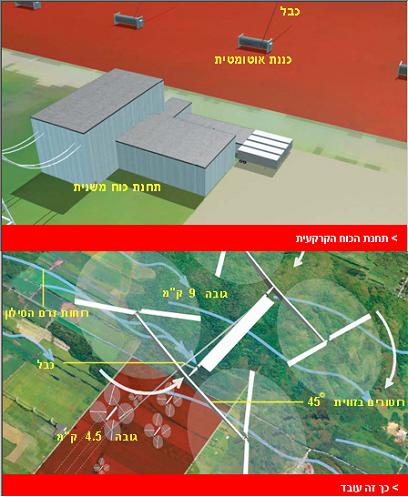A bold plan seeks to ride the jet stream to boost the US power grid.

Wind power is the fastest growing energy source in the US. Current worldwide output is approaching 50,000 megawatts - a rate equivalent to 50 nuclear power plants. However, some problems will likely hinder the rosy plans to produce electricity without air pollution. Besides the great noise they create, the surrounding turbines interfere with the reception of television broadcasts; They are seen as facilities that obscure the view, and as those that are not useful when the wind is not blowing. Brian Roberts, an engineer from the Institute of Technology of Sydney, Australia, found a solution: instead of erecting wind turbines on the surface of the ground, they will be launched into the jet stream - an extremely fast gust of wind that circles the world, at a height of about 4.5 to 13.5 km.
Roberts teamed up with three other engineers and together they founded Sky WindPower - a start-up company operating from San Diego, California, which develops the technology known as FEG. In his vision, Roberts sees huge fleets of flying power generators floating on the jet stream like overgrown kites. Winds with a strength of 300 km/h will spin the rotors of the generators, and these will generate electricity that will be transmitted through extremely strong cables to ground stations. An automatic winch that will be anchored to the ground station - the size of a semi-trailer truck - will control the height of the flying power generator, and will adjust it according to the jet stream forecasts of the National Forecasting Service. Clusters of ground stations will be connected to a secondary power station where the electricity will be converted to the standard voltage of the electricity grid. According to Roberts, it is possible to install 600 generators, each of which will produce 20 megawatts and which will be able to produce enough electricity for two cities.
In the next two years, Sky WindPower intends to build a working version that will produce 200 kilowatts and launch it from a remote area of the US, if only the Civil Aviation Administration (FAA) approves the company's request to do so. "We have already done the planning and calculated the dimensions, weights and costs" says Roberts. "Now we need 4 million dollars to build the prototype."
The ground power plant
How will the electricity be produced:
The Flying Farm –
Clusters of flying power generators will be placed in aerial wind farms with an area of about 500 square kilometers. The turbines will be made from materials typical of the aviation industry - carbon fiber, aluminum and glass fiber - and each of them will weigh about 20 tons. The generators will be equipped with rotors with a diameter of 40 meters. The rotors have a dual role - both to generate electricity and to control the aircraft.
The flying generators will be connected to a 3-inch-thick cable that will attach them to the winch at the ground station. The cable will transmit a voltage of 20,000 volts through two insulated aluminum fibers, which will be wrapped around a core of Vectran - a lightweight and extremely strong fiber that is used in a variety of applications, from strings of tennis rackets to airbags in NASA spacecraft.
At takeoff, the flying power generators work like helicopters. With electrical power from the ground station, the rotors rotate horizontally and carry the aircraft upwards. When the vessel approaches the jet stream, the rotors tilt upwards at an angle of about 40°, in order to reduce the lifting force and increase the torque of the turbine rotation.
The flying power generators are equipped with computerized pitch control. The built-in system adjusts the horizontal stabilizers of the generators according to changes in the speed of the jet stream, and the rotors tilt up or down in order to obtain the most suitable angle for the wind.
